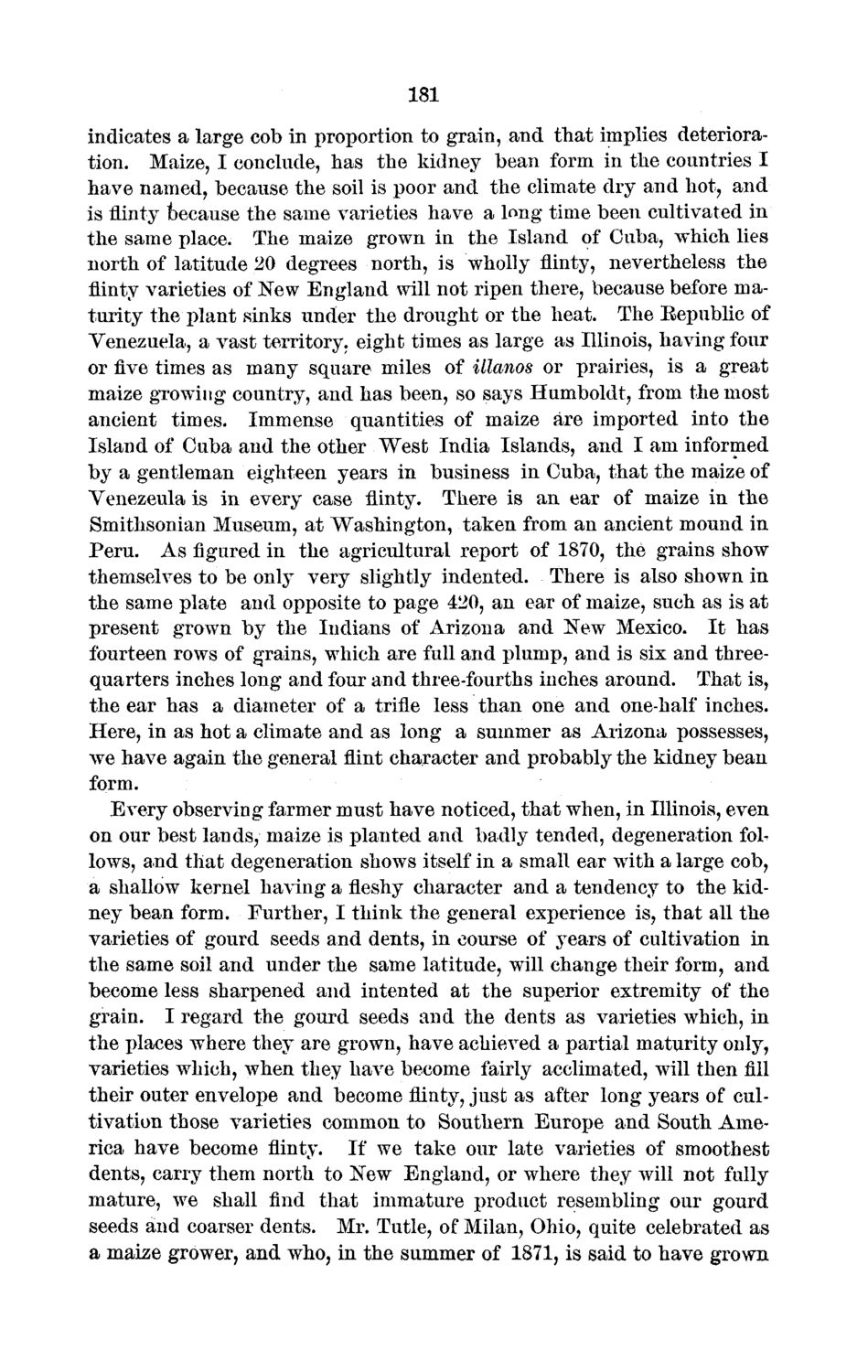| |
| |
Caption: Board of Trustees Minutes - 1872
This is a reduced-resolution page image for fast online browsing.

EXTRACTED TEXT FROM PAGE:
181 indicates a large cob in proportion to grain, and that implies deterioration. Maize, I conclude, has the kidney bean form in the countries I have named, because the soil is poor and the climate dry and hot, and is flinty because the same varieties have a long time been cultivated in the same place. The maize grown in the Island of Cuba, which lies north of latitude 20 degrees north, is wholly flinty, nevertheless the flinty varieties of New England will not ripen there, because before maturity the plant sinks under the drought or the heat. The Eepublic of Venezuela, a vast territory, eight times as large as Illinois, having four or five times as many square miles of illanos or prairies, is a great maize growing country, and has been, so says Humboldt, from the most ancient times. Immense quantities of maize are imported into the Island of Cuba and the other West India Islands, and I am informed by a gentleman eighteen years in business in Cuba, that the maize of Venezeula is in every case flinty. There is an ear of maize in the Smithsonian Museum, at Washington, taken from an ancient mound in Peru. As figured in the agricultural report of 1870, the grains show themselves to be only very slightly indented. There is also shown in the same plate and opposite to page 420, an ear of maize, such as is at present grown by the Indians of Arizona and New Mexico. It has fourteen rows of grains, which are full and plump, and is six and threequarters inches long and four and three-fourths inches around. That is, the ear has a diameter of a trifle less than one and one-half inches. Here, in as hot a climate and as long a summer as Arizona possesses, we have again the general flint character and probably the kidney bean form. Every observing farmer must have noticed, that when, in Illinois, even on our best lands, maize is planted and badly tended, degeneration foL lows, and that degeneration shows itself in a small ear writh a large cob, a shallow kernel having a fleshy character and a tendency to the kidney bean form. Further, I think the general experience is, that all the varieties of gourd seeds and dents, in course of years of cultivation in the same soil and under the same latitude, will change their form, and become less sharpened and intented at the superior extremity of the grain. I regard the gourd seeds and the dents as varieties which, in the places where they are grown, have achieved a partial maturity only, varieties which, when they have become fairly acclimated, will then fill their outer envelope and become flinty, jusfc as after long years of cultivation those varieties common to Southern Europe and South America have become flinty. If we take our late varieties of smoothest dents, carry them north to New England, or where they will not fully mature, we shall find that immature product resembling our gourd seeds and coarser dents. Mr. Tutle, of Milan, Ohio, quite celebrated as a maize grower, and who, in the summer of 1871, is said to have grown
| |